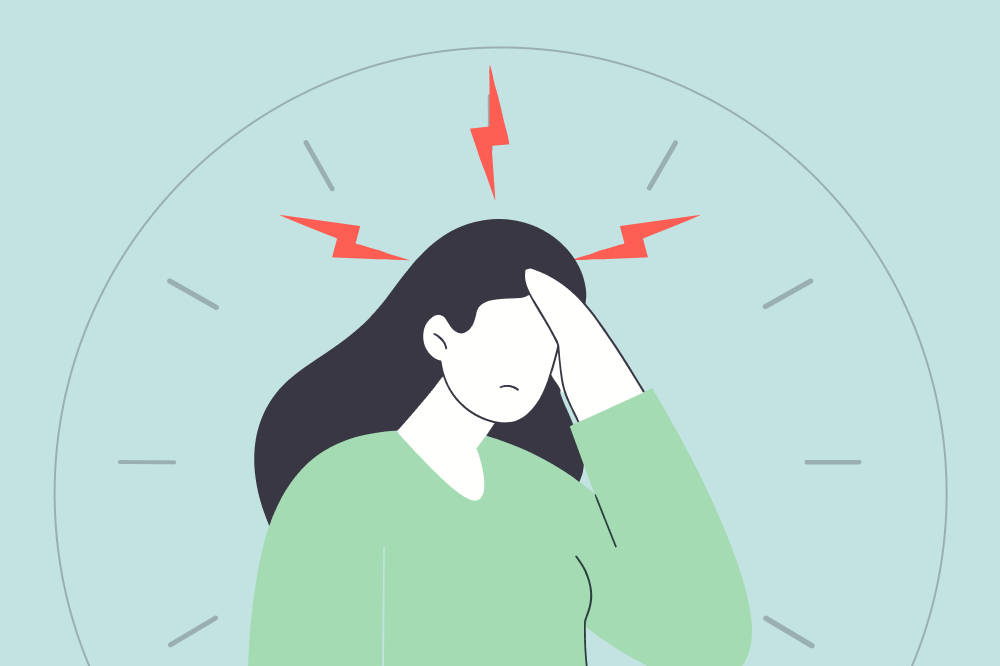Looking Back to Move Forward: What an Early Study on REN Reminds Us About Migraine Relief
Before insurance coverage. Before millions of treatments. Before REN became an FDA-cleared treatment for migraine, there was a simple question.

Could peripherally activating a central pain-inhibiting signal far from the head provide meaningful relief at the onset of a migraine?
That question led to the first rigorous investigation of remote electrical neuromodulation (REN) for acute migraine treatment–a randomized, double-blind, sham-controlled crossover trial conducted in 2015 and published in 2017. [1] And while much has evolved since then–spanning additional randomized control trials, multiple large-scale real-world evidence studies and increasing clinical adoption–this study still offers something important: a glimpse into the early physiological rationale behind REN, and how it tapped into the body’s own pain inhibition pathways.
Today, REN is a clinically validated option for acute and preventive migraine care in adults, adolescents and children ages 8 and up, with growing insurance coverage and a growing number of users. But understanding how we got here helps us explain why it works–and how to optimize it.
This early trial didn’t define REN’s role. But it helped uncover the central mechanism that underpins its effectiveness: a nonpainful, remote stimulation that activates descending pain inhibition.
A Paradigm Shift: Rethinking Where Pain Relief Begins
This approach draws on the well-established concept of conditioned pain modulation (CPM)--a physiologic mechanism whereby a noxious or strongly perceived stimulus in one part of the body can inhibit pain elsewhere via descending analgesic pathways from the brainstem. While painful stimuli are typically used to trigger CPM, they are not ideal for clinical applications. Instead, this study explored whether non-noxious but perceptive stimulation could achieve a similar effect.
The Study: Design and Execution
The study enrolled 86 adults with episodic migraine, each using a wearable REN device (Nerivio) to self-administer electrical stimulation treatments on the upper arm during up to 20 separate migraine attacks. Each participant received all five stimulation protocols—four active programs with varying pulse widths (50 to 200 ms) and one sham. The randomization occurred within subjects, allowing researchers to evaluate how different stimulation intensities affected migraine attacks for each individual.The stimulation intensity was individually adjusted to be well-perceived but not painful, and treatments were initiated as soon as possible after migraine onset.
Participants reported pain levels before and after treatment via a smartphone app, with follow-up assessments at 10, 20 and 120 minutes post-treatment. Rescue medication use within the first 2 hours was forbidden to isolate the device’s effect.
Meaningful Relief for Many
Among the 71 participants included in the final analysis, REN produced a clinically relevant reduction in pain for a substantial proportion.
Key findings include:
- 46-48% of participants achieved ≥50% pain reduction at 2 hours with the two most intense stimulation protocols (P200 and P150), compared to 26% in the sham condition.
- When analyzing best individual responses across all active protocols, 64% of participants were classified as responders (≥50% pain reduction in ≥50% of their treated attacks.
- The strongest program (P200) yielded a number of needed to treat (NNT) of 2.9 for achieving pain reduction from moderate/severe to mild/none–on par with established acute treatments like triptans.
Notably, timing mattered. When stimulation was initiated within 20 minutes of migraine onset, average pain reduction was nearly 47%, versus 25% when treatment was delayed. No participants reported complete pain relief when the device was activated more than 60 minutes after onset.
Importantly, no device-related adverse events were reported, and the majority of participants rated the treatment as pleasant or neutral in sensation. The device’s ease of use and low treatment burden were also cited as advantages.
Exploring the Mechanism
The observed effects support the role of central descending pain inhibition in migraine modulation. Since the stimulation site (upper arm) lies far from the pain site (head), the results are unlikely to be explained by segmental gate control. Instead, this pattern aligns with CPM-like effects that have been demonstrated in other contexts, such as painful diabetic neuropathy, where electrical conditioning stimuli yielded 25-35% pain reductions.
Clinical Takeaway
REN offers a safe, well-tolerated and effective option for patients seeking early, nonpharmacologic intervention for migraine. This early study played an important role in exploring stimulation parameters and defining REN’s place within the world of migraine treatment.
Today, REN is an established therapeutic option—backed by randomized controlled trials, real-world studies and millions of treatment sessions across diverse patient populations.
While this study helped illuminate how activating the body’s own pain inhibitory pathways early in a migraine attack can provide meaningful relief, it’s important to recognize that REN’s clinical impact today extends well beyond these initial findings.
With years of rigorous research, FDA-clearence for both acute and prevention treatment in ages 8 years and up, widespread clinical use and insurance coverage supporting its safety and efficacy, REN stands as a validated, practical option in modern migraine care–giving patients a drug-free, convenient treatment that complements the full spectrum of migraine management strategies.
References:
1. Yarnitsky et al., Neurology, 2017


